How to Do 3d Drawing in Autocad 2017
We have taken a good time lately working on mastering the basics in AutoCAD, and with this skill, you must be able to replicate any 2D images using AutoCAD.
As you must have noticed from our past experience, learning AutoCAD goes first with understanding what the environment is made of, How to draw basic shapes, and finally how to combine all the basics to create complex designs.
AutoCAD 3D tutorials:
AutoCAD 3D how-to tutorials
- 3D AutoCAD drawing
- Subtraction of objects in AutoCAD
- 3D Intersection in AutoCAD
- How to unite 3D objects in AutoCAD
- Drafting a 3D rectangle
- Shell in AutoCAD
- Save your life with the SPHERE command in AutoCAD
- Sweep in AutoCAD
- 3D rotate in AutoCAD
3D Projects (Good 3D practice exercises)
- 3D Design project for beginners – AutoCAD
- AutoCAD 2D to 3D
- An easy Modeling 3D project
- 3D Design project for beginners – A Stool
- 3D design project for Beginners – A table
- CAD projects for Beginners – Tinkercad
- REVOLVE AutoCAD
- How to assemble with Tinkercad
- Beginner's tips – Autodesk Tinkercad
- Design a mechanical part with Autodesk Tinkercad
- Modeling with AutoDesk Tinkercad
AutoCAD 3D features
Before diving into creating your first 3D drawing in AutoCAD, I would like to throw the following.
AutoCAD is primarily for generating 2d sketches. It does have some ability to visualize those 2d sketches in 3d, and even to make 3d objects, but it's primarily built around a flat, sketch-based workflow. If your invention is fundamentally two-dimensional, or made of trivially interlocking 2d parts, AutoCAD might be the right thing.
Inventor is for 3d product design. It's a professional piece of software and takes quite a bit of time to learn, but that's also true of its direct competitors. It's currently Autodesk's most powerful tool for mechanical design. I can't give you a coherent feature comparison to SolidWorks or Creo because I don't know them well enough; I do know that SolidWorks is more popular. Inventor is second, I think.
We do have a fairly new product called Fusion 360. It's built on the same modeling kernel as Inventor, and has better free form modeling. It's designed to be an all-in-one package for product design by hobbyists and small businesses. We focused on making the user interface as easy to learn as possible. It's still quite a new product, and gets updates every few months, partly based on user feedback from its forum. A major advantage is that it's free until you start making money with it, and even after that it's pretty inexpensive.
Adam Helps ( )
No need to elaborate further, but be aware that there are some industries (like Structural Design, Civil engineering) where AutoCAD is the preferred CAD software for 3D creation.
Surface Modeling and Solid Modeling
While talking about AutoCAD Drawing and CAD, it is important to know the difference between Surface Modeling and Solid Modeling.
Surface modeling CAD (Blender, Sketchup, Rhino, Maya) deals with manipulating the curves and surfaces of a model. It's more free form and generally done by clicking and dragging the surface/curves around to your liking. It's ideal for architects, jewelry design, or anything you want done aesthetically.
Solid modeling CAD (Solidworks, Inventor, ProE, SolidEdge, GeoMagic) deals with adding dimensions and constraints to a 3d model. It is "parametric" meaning you can define the shape and later edit. This is very essential for engineers since design changes are always happening. Great for mechanical parts that require constant iterations. Some solid modeling CAD can perform surface modeling but it's a nightmare.
gyronictonic from reddit.com
AutoCAD 3D modeling 101

The following image shows you an overview of what the object is made up of.

All objects are arranged like this
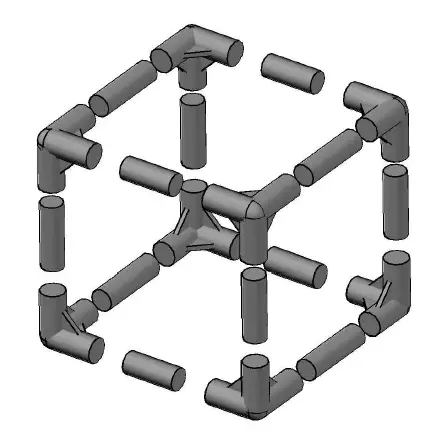
The elbow:
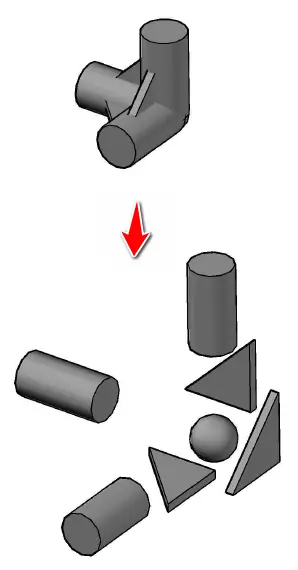
Creating basic 3D AutoCAD drawing
Before fully diving into this, you should make sure all tabs are activated. (Right-click to show the menu)
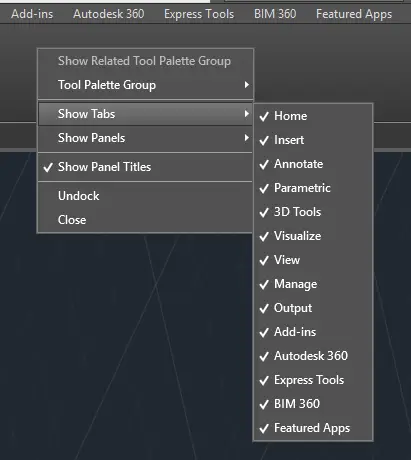
Creating a Cylinder

To create a cylinder
- Click on Cylinder
- Specify the center of the base
- Specify base radius
- Specify the height of the cylinder
Other routes you can use to create a cylinder are the following.
Using the EXTRUDE command
- Create a Circle
- Use the extrude command to obtain the cylinder
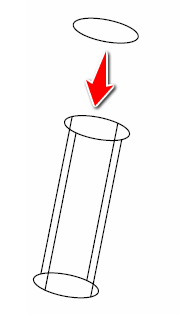
To do that
- Create a circle the way we learned
- Type EXTRUDE and press ENTER
- Select the circle and press ENTER
- Specify the height of extrusion
Using the REVOLVE command
- Create a rectangle
- Use the REVOLVE command to obtain the cylinder
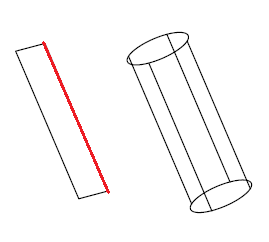
To do that
- Create a rectangle using the RECTANGLE command
- Type REVOLVE and Press ENTER
- Select the rectangle and Press ENTER
- Select one of the ends of the red line shown on the image above
- Select the second end
- and press ENTER
Using this method, you can at the last step decide not to close the cylinder, meaning you will have to enter an angle value less than 360 before pressing ENTER.
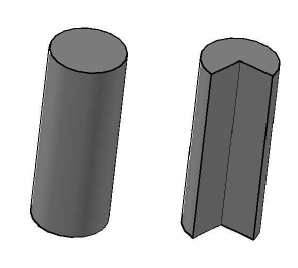
Creating a sphere
To create a sphere
- Click on sphere
- Specify the center of the sphere
- Specify the radius of the sphere
Create the last piece of that elbow
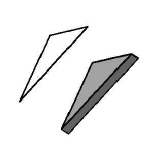
Simply create a triangle and extrude it. (use the POLYLINE command to create the rectangle). You can as well use the WEDGE command to create it.
We have pretty much created all basic 3D objects we need, now we need to create copies, rotate them and assemble everything.
We have seen quite a number of new techniques here today, We will be coming back for the second part of this, where we will deal with some commands like UCS, UNION, SUBTRACT, INTERSECT and show you how to assemble the whole to create our final design.
Source: https://tutorial45.com/first-3d-autocad-drawing/
0 Response to "How to Do 3d Drawing in Autocad 2017"
إرسال تعليق